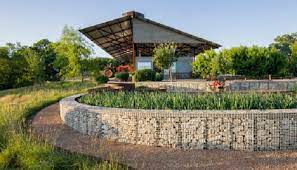Within the world of facilities growth, Gabions (gabiony) come up as being a environmentally friendly remedy that marries architectural ingenuity with environment awareness. These basic yet efficient components, made up of cable mesh storage containers loaded with gemstone or any other locally accessible supplies, offer a range of rewards that street address the difficulties of recent structure assignments.
One of the main advantages of gabions depends on their ability to combat erosion and support slopes. By using natural attributes of natural stone and the flexibility of wire fine mesh, gabions supply deterioration manage in different landscapes, from riverbanks to highway embankments. This erosion management not just safeguards infrastructure assets but also keeps the dependability of surrounding ecosystems and habitats.
Moreover, gabions excel in dealing with stormwater and mitigating deluge risks. By strategically putting gabion barriers along watercourses and flood-vulnerable regions, technicians can regulate drinking water movement, minimize sedimentation, and minimize the influence of flooding on facilities and residential areas. This proactive strategy to flood control boosts resilience and encourages sustainable improvement in vulnerable locations.
Additionally, gabions offer a cost-effective replacement for traditional building materials like cement. Their simplicity in design and construction ensures that gabion components could be implemented swiftly and proficiently, protecting both time as well as solutions. Additionally, the usage of locally sourced resources decreases transportation costs and carbon dioxide emissions, more enhancing the eco-friendliness of gabion jobs.
In conclusion, gabion (gabiony) signify a paradigm shift in system development, in which enviromentally friendly considerations are seamlessly integrated into engineering alternatives. By using the effectiveness of nature and adopting sustainable procedures, gabions offer a pathway towards strong structure that may hold up against the difficulties of any altering weather conditions while conserving the dependability of our own normal setting.
